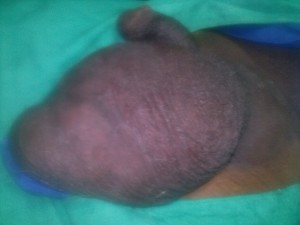
Inguinoscrotal Hernia

Hematocele
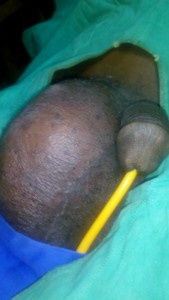
Inguinoscrotal Hernia
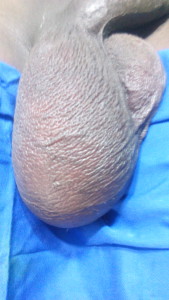
Testicular Hydrocele
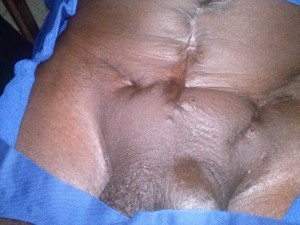
Ingiunoscrotal Hernia repair post prostatectomy
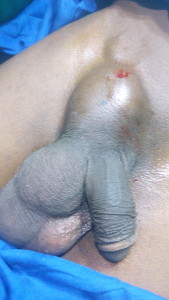
Obstructed Inguiscrotal Hernia
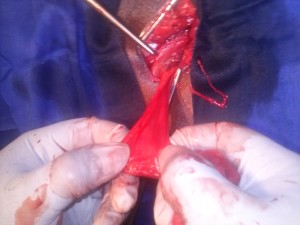
Hernia Sac
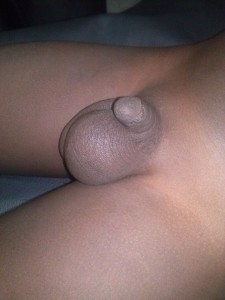
Testicular Hydrocele
SCROTAL SWOLLEN
COMMON FIVE QUESTIONS PEOPLE ASK ON SCROTAL MASSES
Scrotal swollen also known as scrotal masses
- WHAT ARE SCROTAL MASSES?
Scrotal masses are abnormalities in the content of the scrotum (bag of skin hanging behind the penis) the Scrotum contains the testicles & related structures that produces, store and transport sperm and male sex hormones. Scrotal masses might be an accumulation of fluids, the growth of abnormal tissue or contents of the scrotum that have become swollen, inflamed or hardened.
Scrotal masses need to be examined by a doctor, even if you’re not in pain or having other symptoms.
- WHAT SYMPTOMS CAN I HAVE WHEN I HAVE SCROTAL MASSES?
Signs and symptoms of scrotal masses vary depending on the abnormality, it may include.
- An unusual lump.
- Pains that radiates throughout the groin, abdomen or lower back.
- Swelling pain.
- Nausea or vomiting.
- Sudden pain.
- A dull aching pain or feeling of heaviness in the scrotum.
- Tender swollen or hardened testicle.
- Redness of the skin of the scrotum.
IF the cause of the scrotal mass is an infection, signs & symptoms also might include:
- Pus or blood in the urine.
- Urinary frequency.
- WHAT ARE THE REAL CAUSES OF SCROTAL MASSES
i. HEMATOCELE: Hematocele occurs where there is blood between the layers of a sac that surrounds each testicle. Traumatic injury, such as a direct blow to the testicles, is the most likely cause.
ii. INGUINAL HERNIA: This is a condition in which a position of the small intestine pushes through an opening or weak spot in the tissue separating the abdomen and groin. In infants, an inguinal hernia usually occurs because the passage way from the abdomen to the scrotum has failed to close during development.
iii. VARICOCELE: This is the enlargement of the veins within the scrotum carry oxygen deplated blood from each testicle and epididymis. Varicocele is more common on the left side of left side of the scrotum because of differences in how blood circulates from each side. A Varicocele might cause infertility.
iv. TESTICULAR TORSION: This is a twisting of the spermatic cord, the bundle of blood vessels, nerves and the tube that contains semen from the testicle to the penis.
v. TESTICULAR CANCER: Testicular cancer is a tumor containing abnormal testicular tissue, which can usually be felt as a lump in the scrotum. Although most tumors don’t cause other symptoms, some men experience pain or swelling.
vi. EPIDIDYMIS: This is inflammation of the epididymis, the comma-shaped structure above and behind the testicle that stores and transport sperm. Epididymis is often caused by a bacterial infection, including sexually transmitted bacterial infections such as Chlamydia. Less commonly epididymitis is caused by viral infection or abnormal flow of urine in the epididymis.
vii. HYDROCELE: Hydrocele occurs when there is excess fluid between the layers of a sac that surround each testicle. A small amount of fluid in this space is normal, but the excess fluid of a hydrocele usually results in a painless swelling of the scrotum.
viii. SPERMATOCELE: Also known as a spermatic cyst or epididymal cyst, spermatocele is a typically painless, non cancerous (benign), fluid filled sac in the scrotum, usually above the testicle.
ix. ORCHITIS: This is an inflammation of the testicle usually due to viral infection, most commonly mumps. When orchitis is caused by a bacterial infection, the epididymis also might be infected.
- WHEN SHOULD I BE WORRIED ABOUT SCROTAL MASSES?
- When you are experiencing pains in or near your scrotum.
- When you have recent injury to your groin.
- When you discover a lump or experience other symptoms associated with a scrotal mass?
- When symptoms get worse when or during exercises or exertion that put strain on the groin?
- CAN SCROTAL MASSES HAVE COMPLICATION ON MY BODY?
Not all scrotal masses results in long- term complications. However, any mass that affects the health or function of the testicle can leads to
- Delayed or poor development during puberty.
- Infertility

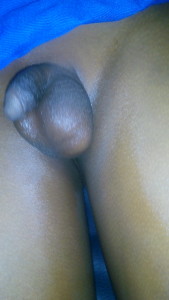
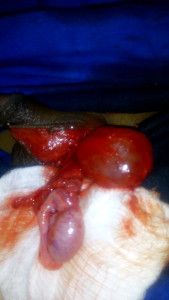
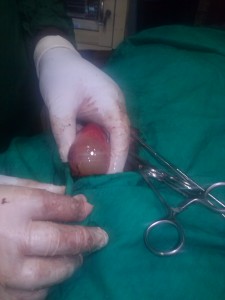
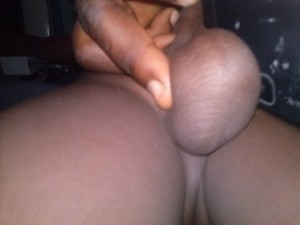
Recent Comments